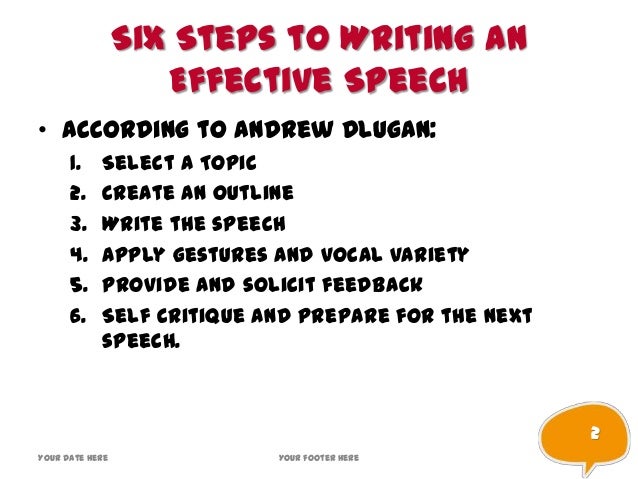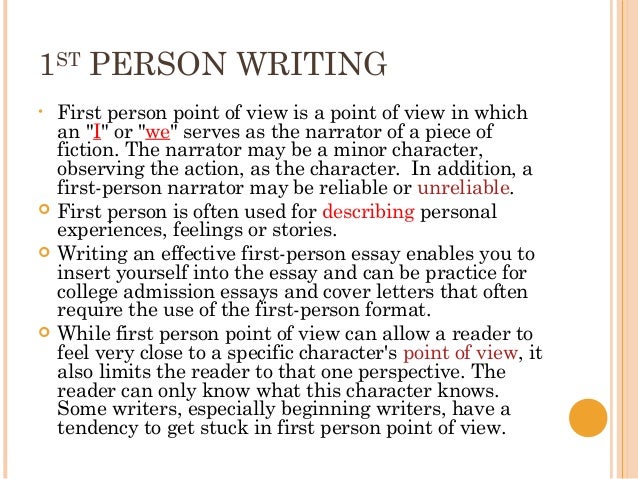
Understanding speech construction
First Person POV (You are experiencing it) – "My heart leaped into my throat as I turned and saw a frightening shadow." Second Person POV (Force you into the story) – "You turn and see a frightening shadow." Third Person POV (Show different points of view) – "The children turned and saw the frightening shadow · Thematic flower. This “romantic” method is great when you want to look at your topic from different perspectives. You put the keywords of your topic in the center, and around them different spheres related to the theme. For example, let’s say you have to express your opinion about a universal language for all people The first person point of view tells the story from the perspective of the author or narrator. Because of that, it uses first person pronouns like “I,” “we,” “my,” “mine,” “our,” and “ours.” Second person point of view, on the other hand, tells the story while addressing the reader directly

Table Of Contents
· Thematic flower. This “romantic” method is great when you want to look at your topic from different perspectives. You put the keywords of your topic in the center, and around them different spheres related to the theme. For example, let’s say you have to express your opinion about a universal language for all people · In 1st person point of view, you can write “I” and “us” as well as “you,” “them,” and “it.” The first person narrator refers to themself with first-person pronouns, such as: I Me My We Us Our Myself Ourselves In real life, we all First Person POV (You are experiencing it) – "My heart leaped into my throat as I turned and saw a frightening shadow." Second Person POV (Force you into the story) – "You turn and see a frightening shadow." Third Person POV (Show different points of view) – "The children turned and saw the frightening shadow

What is Point of View?
First Person POV (You are experiencing it) – "My heart leaped into my throat as I turned and saw a frightening shadow." Second Person POV (Force you into the story) – "You turn and see a frightening shadow." Third Person POV (Show different points of view) – "The children turned and saw the frightening shadow · In 1st person point of view, you can write “I” and “us” as well as “you,” “them,” and “it.” The first person narrator refers to themself with first-person pronouns, such as: I Me My We Us Our Myself Ourselves In real life, we all Following is an example of how you can craft an effective outline for your speech. 1) Prepare Choose the topic Know your audience and pay attention to their needs Define the purpose of the speech Organize the information 2) Introduction Think about a statement that can grab the attention of audience members Refine the thesis statement

Advantages of the First Person Point of View
The first person point of view tells the story from the perspective of the author or narrator. Because of that, it uses first person pronouns like “I,” “we,” “my,” “mine,” “our,” and “ours.” Second person point of view, on the other hand, tells the story while addressing the reader directly First Person POV (You are experiencing it) – "My heart leaped into my throat as I turned and saw a frightening shadow." Second Person POV (Force you into the story) – "You turn and see a frightening shadow." Third Person POV (Show different points of view) – "The children turned and saw the frightening shadow · Thematic flower. This “romantic” method is great when you want to look at your topic from different perspectives. You put the keywords of your topic in the center, and around them different spheres related to the theme. For example, let’s say you have to express your opinion about a universal language for all people

Defining First Person Point of View
The first person point of view tells the story from the perspective of the author or narrator. Because of that, it uses first person pronouns like “I,” “we,” “my,” “mine,” “our,” and “ours.” Second person point of view, on the other hand, tells the story while addressing the reader directly · Thematic flower. This “romantic” method is great when you want to look at your topic from different perspectives. You put the keywords of your topic in the center, and around them different spheres related to the theme. For example, let’s say you have to express your opinion about a universal language for all people Following is an example of how you can craft an effective outline for your speech. 1) Prepare Choose the topic Know your audience and pay attention to their needs Define the purpose of the speech Organize the information 2) Introduction Think about a statement that can grab the attention of audience members Refine the thesis statement
No comments:
Post a Comment